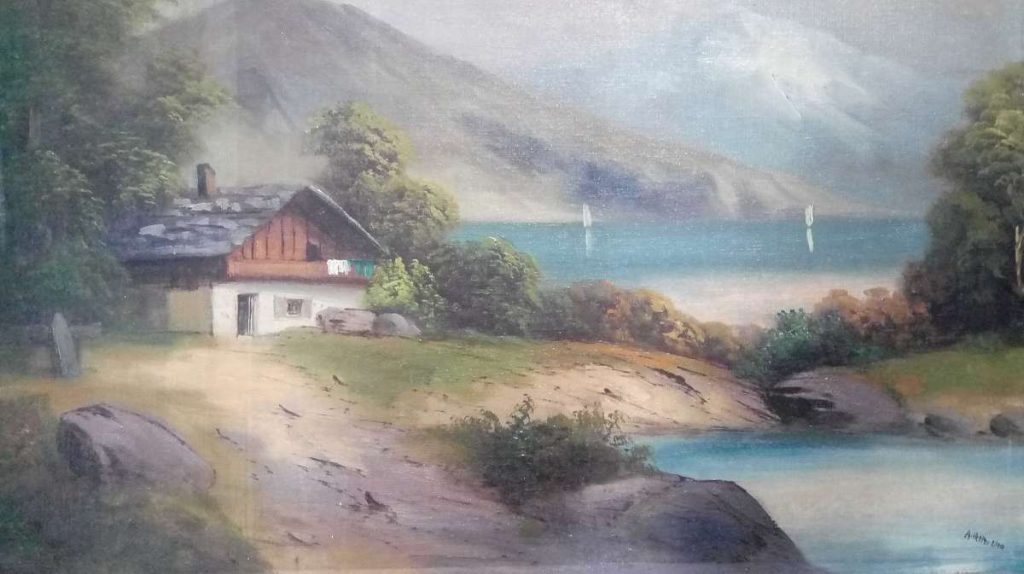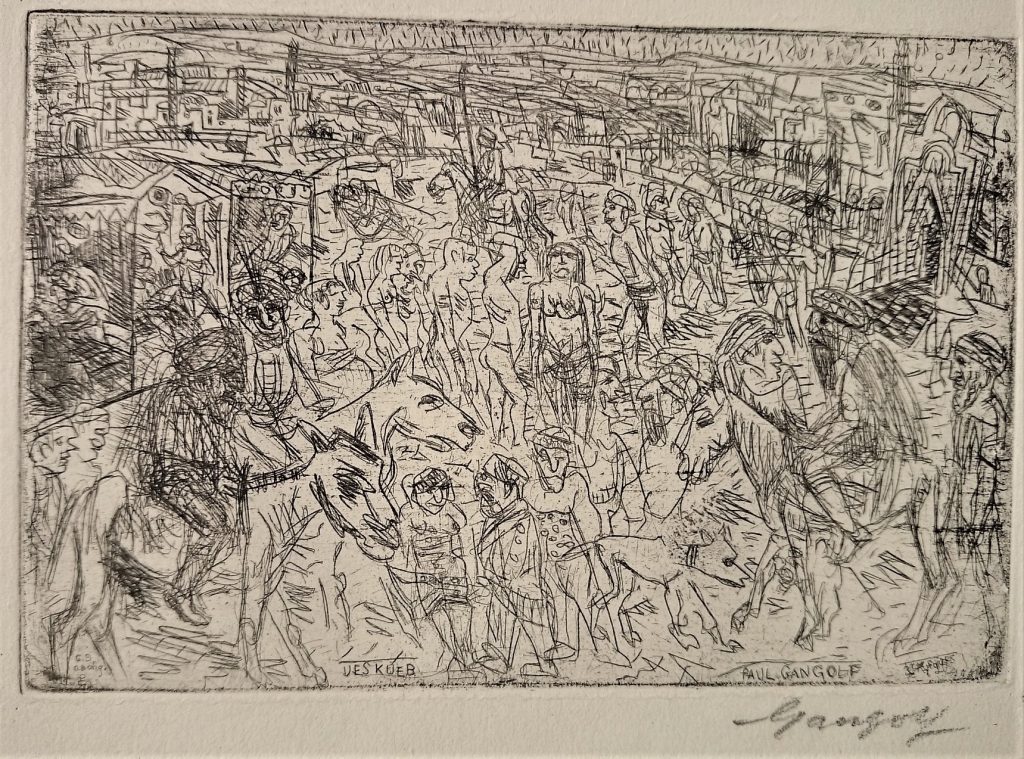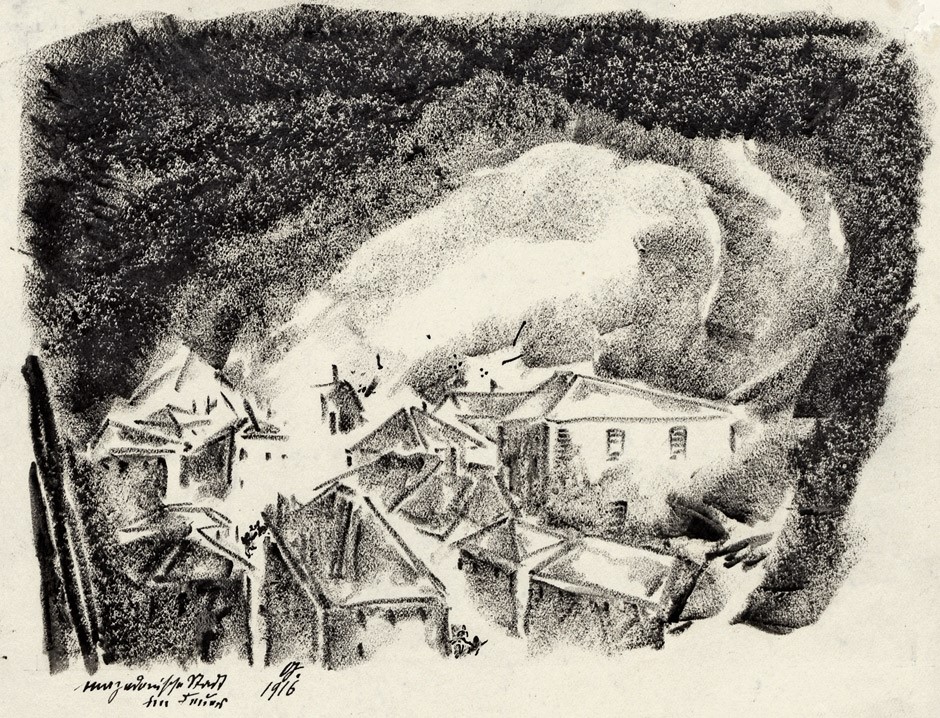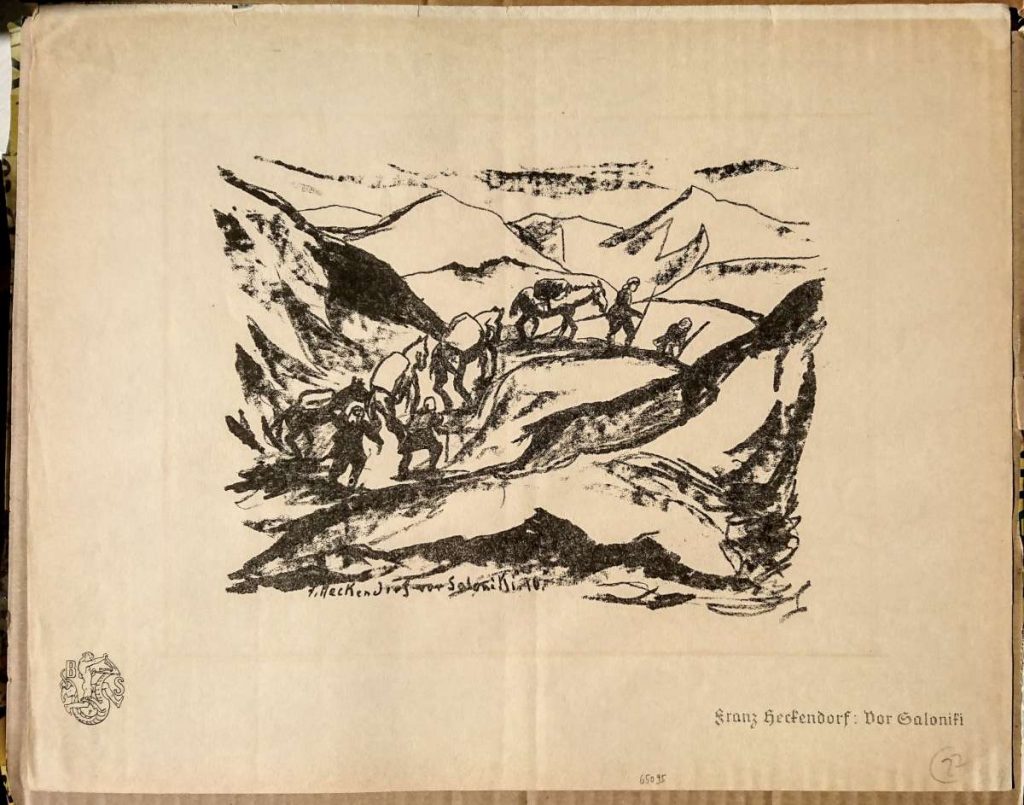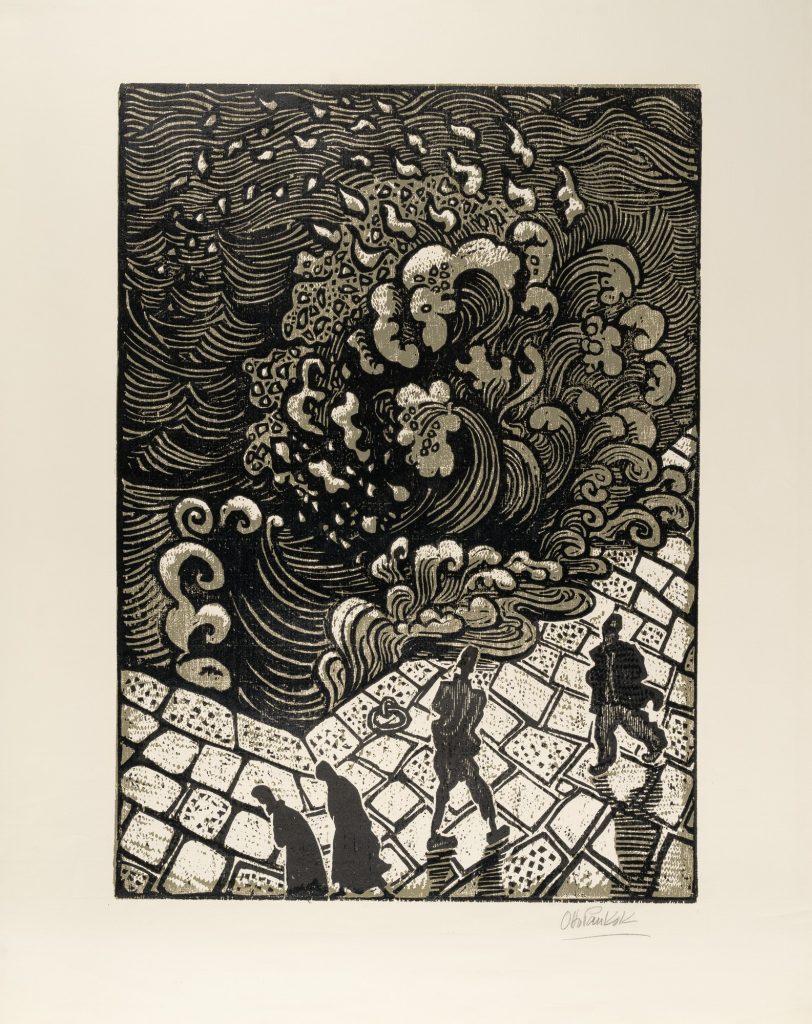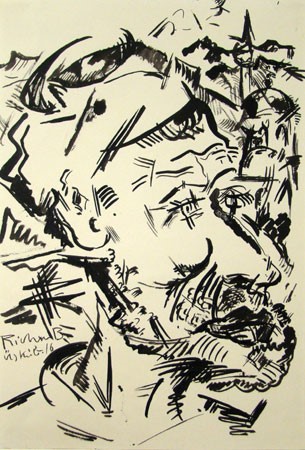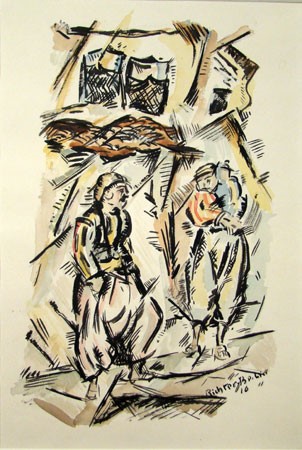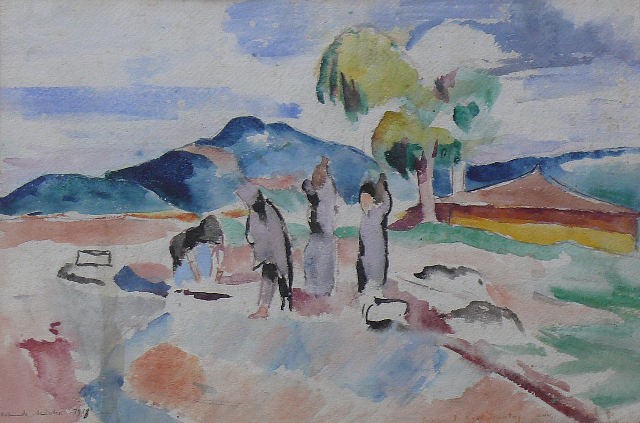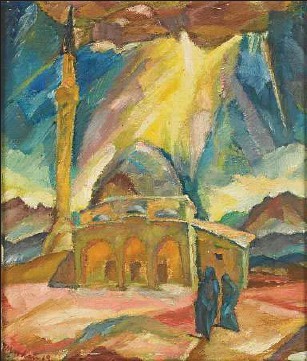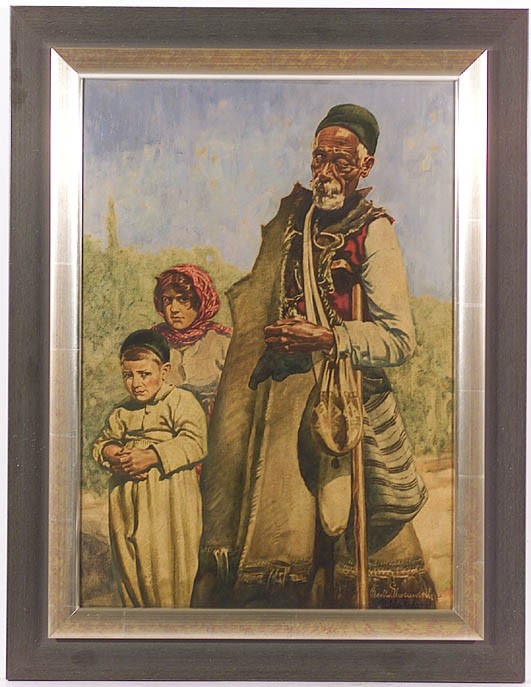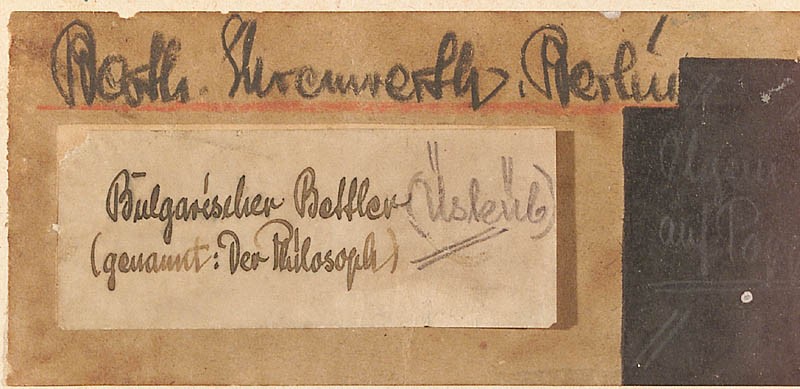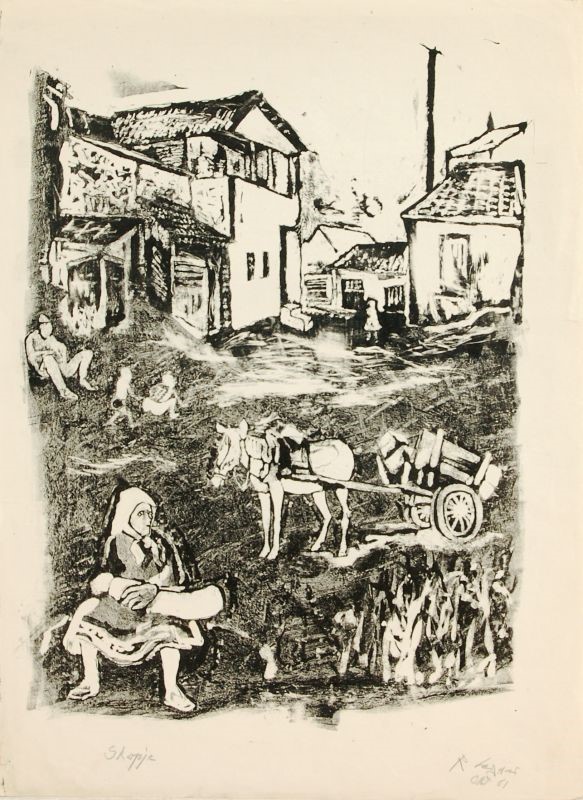—–
It is 1907. Many young students are trying to pass the Academy entrance exam. The number of student positions is limited, and the criteria are high. Each applicant needs first to pass drawing tests given by the Academy examiners. Then the applicants present to the examiners their own portfolios which must show some artistic innovations. A 17-year old young applicant from Linz managed to pass the drawing tests. He was very skillful and precise in drawing an architecture. But when the Academy examiners looked at his portfolio, they concluded that it is too much influenced by 19th century neo-classicists and outdated for these modern times. The young man is rejected the academy entrance, but he is not discouraged. He tries again next year. In 1908, he is rejected again. The examiners felt pity of him. One of them proposed him to try his luck at the academy’s School of Architecture. The young man is devastated. His painter career is finished before it started. He hates modernism and abstraction. “They ruined my dreams”, he thinks. The name of the young man is – Adolf Hitler.The young Adolf wanders through the streets of Vienna and tries to survive. He sleeps in the homeless shelters, he paints houses, but he does not give up on his love for painting. He paints postcards that he tries to sell to Vienna tourists.
In 1911 he enters in a picture frame shop where he meets his business partner – Mr Samuel Morgenstern – a prominent Jewish businessman. Mr Morgenstern sells frames, and he realized that the frames can easily be sold if there is a picture in it. Mr. Morgenstern started to buy Adolf’s watercolors cheaply to fill in his frames. Almost all paintings of young Adolf went through the hands of Mr. Morgenstern. Most of Mr. Morgenstern customers are Jewish, Paintings of young Adolf are decorating many Jewish houses in Vienna.
Young Adolf’s frustrations are growing further. “My art is undervalued. The Jewish businessman is abusing my art”, he thinks. Adolf is angry on the system that does not value the “true art”. “They are all making my life miserable, the Jewish businessmen, the modernists…all of them are disease to the empire”, he concludes. The Great War started in 1914 and young Adolf volunteers in German army.
30 years later, in 1943, Mr. Samuel Morgenstern died in the Jewish Łódź Ghetto concentration camp in Poland.
—–
It is January 31,1933. Тhe German national socialistic workers party (NSDAP) won the elections. Adolf is much better in politics than in art.
“The payback time finally arrived. I will save the nation from the disease of modernism”, he thinks. The party street soldiers immediately start burning modernistic books. Jazz and any form of music of black, Jewish or Bolshevik origin is prohibited. The party established new body: Reich Culture Chambe (Reichskulturkammer) led by Joseph Goebbels, with a primary goal to control and censor the individual arts: music, film, literature, architecture, and the visual arts.
Overnight, the modernist paintings started to be removed from the museums and galleries – Picasso, Matisse, van Gogh, Chagall, Kandinski, Nolde (even if he was a committed Nazi member), Klee…and started to be replaced with art preferred by the party – soc-realistic and neo -classic art that glorified heroism and romance with simple and understandable aesthetics.
But the public still likes modernism. Even Goebbels himself shows signs of appreciations toward Expressionism. People still read the books of Franz Kafka and Herman Hesse. People still listen to the jazz music of the gipsy guitarist Django Reinhardt.
Adolf’s frustration grows again. He decides to show how “terrible and degenerated the modernism is” with setting up two parallel exhibitions next to each other: one exhibition showing the “real” art , approved by the party, and the other one showing “degenerate art” that damages the society.
The event happened in Munich from 19 July to 30 November 1937.
The “Degenerate Art” (Entartete Kunst) exhibition presented 650 modern works of art confiscated from German Museums and was staged next to the “Great German Art Exhibition” (Grosse deutsche Kunstausstellung) located few meters next to it. The paintings of Picasso, Paul Klee, Frans Marc, Piet Mondrian, Wassily Kandinsky, Marc Chagall… were scattered on the ground. Insulting graffiti were written around the works of art. Gallery officials ridiculed the works of art during the visitor time. The Nazi party tried all its best to create a feeling of disgust at the audience from such modern art.
At the end of four months “Degenerate Art” attracted over two million visitors, nearly three and a half times the number that visited the nearby “Great German Art”.
That party members were furious with the outcome. “That was it! No more tolerance!” The great purge of modern art started. Any sort modern art in any form – written, painted or played was treated as a crime. A large amount of paintings disappeared, either looted or destroyed. The annihilation of German modern artists started. Some of them managed to escape (Max Ernst to USA, Paul Klee to Switzerland) some of them died (Ernst Ludwig Kirshner committed suicide, Alfred Flechtheim, died in poverty in London) some of them moved internally to save their life (Otto Dix, Emil Nolde).
A massive painting burnings events were organized by the Nazi Party. On March 1939, Berlin Fire Brigade burned 4000 modernist paintings, drawings and prints. On July 27, 1942 in the garden of Paris national gallery (Galerie nationale du Jeu de Paume) a large amount of “degenerate art” by Picasso, Dalí, Ernst, Klee, Léger and Miró was burned.
—–
This inferno of insanity has hit the German modernists that visited Macedonia, as well as their art. One can only wonder how many “Macedonian” works of art have been destroyed or looted in these years of pandemonium.
Paul Gangolf (1879 -1936) was an expressionists German painter that served in the German army in Macedonia in 1917. In 1935 he started openly criticizing the NSDAP for their art censorship policies. He was arrested and sent in the concentration camp Columbia House, and later in the concentration camp Esterwegen where he was shot in 1936. The only survived work of art related to Macedonia is the etching entitled “Ueshkueb”. A sample of that etching is in my collection. Gangolf’s works of art are today in the collections of elite world museums and galleries, such as: Museum of Modern Arts in New York, the Los Angeles County Museum of Art, the British Museum, among others.
Willi Geiger (1878 -1971) was a professor at the School of Decorative Arts in Munich in 1914. When the Great War started, he served in the German army in Macedonia as a balloon observer, His “Macedonian” art works were published in a very rare book with title book “Geiger Willi, 10 Lithographien von Ostlichten Kriegsschhauplatz”. I am constantly searching for this book, but it is impossible to find. When NSDAP took the power, he was dismissed from his job as a professor at the Leipzig Academy and his works removed from the museums and public. He managed to survive the war and became professor at the College of Fine Art in Munich.
Franz Heckendorf (1888 –1962) was a German painter who had his first exhibition in the Berlin Secession in 1909. During the Great War he was pilot in Macedonian front, where he produced several lithographs (“Before Saloniki,” is in my private collection). Between 1943-45 he was convicted for helping his Jewish friends to escape and was sent to the concentration camps Waldshut and Mаuthausen. After the end of the war, he worked as a professor, first at the Vienna Academy, later in Salzburg and finally in Munich.
Otto Pankok (1893-1966) had his art education at elite art academies in Dusseldorf and Paris. He was a founder of German art group “Junge Rheinland” (Young Rhineland) and very influential modernist. In 1933, Pankok was declared a degenerate artist. Subsequently, 56 of his pictures were seized from museums, some of which were included in the infamous exhibition Entartete Kunst (Degenerate Art) in 1937 in Munich. He managed to survive the war and became professor at the Art Academy in Dusseldorf. Otto Pankok lived in Ohrid in 1954 and 1957. His wife, Hilde, started to paint in Ohrid and later became professional painter herself.
Heinrich Richter-Berlin (1884 – 1981) was a Berlin painter and stage artist that belonged in the avant-garde group “Berlin Secessionists”. Before the Second world war, he worked together in Paris with Picasso, Braque and Otto Freundlich. Together with Max Pechstein, Karl Schmidt-Rottluff and Georg Tappert formed the “New Secession” movement and “November Group”. During the Nazi years, his art was removed from museums and he was forbidden to create art. He and his art managed to survive the war
Heinrich Richter-Berlin was in the German pilot unit stationed in Macedonia between 1914 and 1918. He was mainly located in Skopje and Veles. During his period, he produced more than 150 drawings and watercolors with local scenes from Skopje, painted in a strong cubistic style, 6 of them are in my collection.
Otto Schirop (1904 – 1958) was German expressionist from Hamburg who painted urban and factory view and his style reminded to the one of Karl Schmitt-Rottluff. Otto Schirop visited Macedonia in 1931. There is a painting entitled “Blick uber den Wardar auf die Zitadelle von Skoplje, 1931” (“View at river Vardar from thе Castle of Skopje”). He managed to survive, but its post-war work was shaped by dealing with the war experience and the post-war crises.
Paul Wellershaus (1878 – 1976) was educated at the art academies in Dusseldorf and Paris. His early style was impressionistic under great influence of Paul Cezanne. The Great War brings him to Macedonia where he served as an official war painter between 1914 – 1918. He caught malaria in Macedonia and was released from the service at the very end of the war. His stay in Macedonia changes his artistic style. He moved toward social themes and expressionism. After the Great War, he was a co-founder of the important German modernist group “the Rhein Secessionists”. He was declared “Degenerate artist” around 1940 and much of his art was destroyed, including his Macedonian paintings. Today there is only a gallery record that in 1916 he exhibited 13 oil paintings and 10 graphic works from his war period in an art gallery in Barmen.
Helmuth Macke (1891-1936), a brother of the famous painter August Macke, and a very successful painter himself, was a German soldier at the Dojran Front in 1916-17. He created a series of expressionistic Dojran lake landscapes which were later destroyed by the Nazis.
Franz Markau (1881-1968) was a painter from Berlin that served as a German soldier in Macedonia during the Great war. After the war he worked with prominent Berlin expressionists, for example Käthe Kollwitz. His art was declared “degenerate” and he lost his son in the Second world war.
Berthold Ehrenwerth (1886 – 1945) was a pupil of Karl Koepping at the Berlin Academy of Fine Arts, was awarded an academic Rome Prize. He visited Macedonia during the Great war and later painted the paintings “Bulgarian beggars in Ushkub” in 1927 after the early drawings that he made in Skopje 1917. He was German Jew and he was killed by the Nazis somewhere between 1940 and 1945.
Rudi Lesser (1901 – 1988), Born and died in Berlin. He was a student of prof. Hans Meid. In 1933 he immigrated to the Scandinavian countries (Denmark and Sweden) in order to escape from the emerging Nazi regime. Rudi Lesser survived the war and visited Macedonia at the end of 1950s, where he produced at least one lithography: “Skopje 1961”, which today is in my collection.
ТHE AFTERMATH
In 2010, as work began to extend an underground line from Alexanderplatz through the historic city center to the Brandenburg Gate, a number of sculptures from the degenerate art exhibition were unearthed in the cellar of a private house close to the “Rote Rathaus” city hall. These included, for example, the bronze cubist-style statue of a female dancer by the artist Marg Moll, and are now on display at the Neues Museum.
—–
In September 2010, the German custom police raided the house of 77-year-old Cornelius Gurlitt in Munich and discovered 1,406 works of art initially reported as worth €1 billion. The collection included works by Renoir, Matisse, Otto Dix and many other famous artists. All the works were labeled as “Degenerate” by the Nazis and looted during the war years.
—–
During the court trial in 2013, Mr. Gurlitt also revealed the existence of a second portion of the collection at his Salzburg house; these items, more than 250 pieces including works by Monet, Renoir, Gauguin, Liebermann, Toulouse-Lautrec, Courbet, Cézanne, Munch and Manet, were never touched by the German authorities and are still missing.
—–
We can only hope that more “degenerate art” works from Macedonia will be discovered in some hidden cellar, somewhere, sometime.
